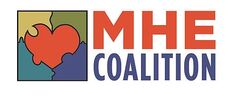Legs and Knees
The likelihood of involvement near the knee in at least one of the three locations is approximately 94%.
Affects of MHE on the Knees
Diagnostic Procedures
Possible Treatment Options
What Parents Should Watch Out For
*Notes from The MHE Coalition: A good way to track possible bowing in your child’s legs is to take a photo of your child dressed in shorts, standing straight with back to wall, legs together. Every few months take another photo of your child in the same position, and date and keep these photos to show your child’s doctor. You can even have your child hold a sign with the date you take the picture (written dark enough to be picked up by the camera!).
Affects of MHE on the Knees
- A clinically significant inequality of 2cm or greater has been reported with a prevalence ranging from 10-50%. Shortening can occur in the femur and/or the tibia; the femur is affected approximately twice as commonly as the tibia. Surgical treatment with appropriately timed epiphysiodesis has been satisfactorily employed in growing patients. In addition to limb-length discrepancies, a number of lower extremity deformities have been documented. Since the disorder involves the most rapidly growing ends of the long bones, the distal femur is among the most commonly involved sites and 70-98% of patients with MHE have lesions. Coxa valga has been reported in up to 25%; lesions of the proximal femur have been reported in 30-90% of patients with MHE. Femoral anteversion and valgus have been associated with exostoses located in proximity to the lesser trochanter.
- Genu Valgum or Knock-knee deformities are found in 8-33% of patients with MHE. Genu valgum is defined as a mechanical malalignment of the lower limb when the knees knock against each other and the legs are pointed away from the body. Although distal femoral involvement is common, the majority of cases of angular limb deformities are due mostly to lesions of the tibia and fibula (Figures 8,9 & 10), which occur in 70-98% and 30-97% of cases, respectively. The fibula has been found by Nawata et al. to be shortened disproportionately as compared to the tibia, and this is likely responsible for the consistent valgus direction of the deformity. Genu varum or Bowlegs may also occur in some cases. This is defined as a mechanical malalignment of the lower limb when the knees drift away from the body and the legs are bowed and close together.
Diagnostic Procedures
- The orthopedist will probably manually feel for exostoses along the leg, and check range of motion (“ROM”) by manipulating (moving) the leg in different directions. The orthopedist will also check measurements on each leg to see if there is a difference. X-rays or other imaging tests may be ordered.
Possible Treatment Options
- Minor length discrepancies can sometimes be effectively treated with the use of orthotics (specially made shoes or lifts that will equalize leg length).
- Bowing and some limb length discrepancies and be treated with a surgical procedure called “stapling,” where surgical staples are inserted into the growth plate of the leg bone growing faster than the other. This will hopefully give the slower growing bone the chance to “catch up” and the limb will straighten over time.
- Limb Lengthening with a Fixator
- Excision of exostoses
- Osteotomy
What Parents Should Watch Out For
- Any red flags in terms of sudden increase in size of swelling, pain, nerve compression, tingling, numbness, or weakness.
- Possibility of exostoses irritating or catching on overlying tissue, such as muscles, tendons, ligaments, or compressing nerves.
- Leg cramps, bluish color, difference in skin temperature may indicate compression of an artery (most often the popliteal artery, located behind the knee).
- Compression of the peroneal nerve, which runs along the outside of the leg, can cause a condition known as “drop foot”, in which the foot cannot voluntarily be flexed up. Compression can be caused by exostoses growth, or as a complication of surgery.
- Limping, pain when walking
- Bowing of leg(s)
- Exostoses on inside of legs bumping into each other
- Exostoses interfering with normal movements, either by blocking movement or by causing pain (bending, sitting, walking up or down stairs)
- Pain and fatigue when walking
- Gait problems (awkwardness, limping, slow movements, etc.)
*Notes from The MHE Coalition: A good way to track possible bowing in your child’s legs is to take a photo of your child dressed in shorts, standing straight with back to wall, legs together. Every few months take another photo of your child in the same position, and date and keep these photos to show your child’s doctor. You can even have your child hold a sign with the date you take the picture (written dark enough to be picked up by the camera!).
